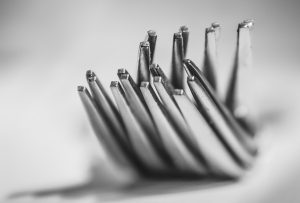
Buffing and polishing are two common finishing processes used in the manufacturing industry. They both involve smoothing the surface of a workpiece to improve its aesthetics as well as its physical properties. Unbeknownst to many people, however, buffing and polishing aren’t the same. Each finishing process has its own unique characteristics. So, what’s the difference between buffing and polishing exactly?
What Is Buffing?
Buffing is defined as a finishing process that involves the use of a loose abrasive on a wheel. To polish a workpiece, a manufacturing company may use a wheel that’s covered with an abrasive disc. The loose abrasive on the disc essentially removes superficial material and imperfections, thereby creating a smoother surface.
What is Polishing
Polishing, on the other hand, is a finishing process that involves the use of an abrasive that’s secured — typically with glue or other adhesives — to the wheel. As a result, polishing is considered a more aggressive finishing process when compared to buffing. It’s able to remove more superficial material from the surface of a workpiece, allowing for a brighter and more polished finish.
Buffing and Polishing Abrasives
Both buffing and polishing require the use of an abrasive. There are low-grit, medium-grit and high-grit abrasives. Low-grit abrasives may consist of just 60 to 80, whereas medium-grit abrasives may range from 100 to 200. The grit of an abrasive reflects its smoothness. Low-grit abrasives are particularly rough because they contain fewer grit particles than medium- and high-grit abrasives. Therefore, buffing and polishing processes often begin with the use of a low-grit abrasive, after which higher-grit abrasives are used.
It’s important for manufacturing companies to use the right type of abrasive when performing buffing and polishing. If the wrong abrasive is used — an abrasive with either too little or too much grit — the workpiece could sustain damage.
The Differences Between Buffing and Polishing
The primary difference between buffing and polishing is that the former involves the use of a loose abrasive on the wheel, whereas the latter involves the use of an abrasive that’s secured to the wheel. In other words, the grit-based abrasive used in polishing isn’t glued onto the wheel. It’s loosely attached, allowing for quick and easy removal and replacement.
Aside from this subtle nuance, another difference between buffing and polishing lies in the grit of the abrasive. Although there are exceptions, buffing is typically performed with a low- or medium-grit abrasive, whereas polishing is performed with a high-grit abrasive.
